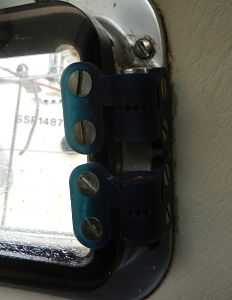3D Printing - Various Parts
3D printing technology has come on in leaps and bounds in the last few years. It now represents a very cost effective way of producing parts which are no longer commercially available.
Portlight Hinge
These plastic hinges are found on many of the earlier westerly's.
Some collaborative work on the Forum has resulted in a 3D printing file that works with FormLabs professional grade high resolution SLA printer. The part must be fabricated with high strength resin.
Anyone who would like a hinge can contact the sysops to be put in touch with Hillary Corney. Hillary has access to SLA equipment and is happy to produce the part at cost plus postage and packing.
